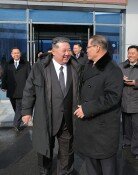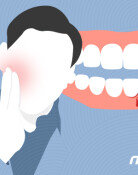This Years Real Unemployment Rate to Exceed 15 Percent
This Years Real Unemployment Rate to Exceed 15 Percent
Posted December. 12, 2004 22:49,
Analyses have shown that the real unemployment rate this year, including that of irregular daily workers who are nearly unemployed and those who have given up employment, hovers over 15 percent, the highest number since relevant numbers have been computed.
However, the official unemployment rate (unemployment indicator) released by the Korean National Statistical Office stopped short at 3.5 percent, and the figure this year is lower than in other economically robust years, resulting in criticisms that it fails to reflect reality.
The Samsung Economic Research Institute said on December 12 that the incomplete use of labor force, which means the real unemployment rate, from January to September this year was 15.1 percent, 4.3 times higher than the official figure, 3.5 percent, released by the government.
The institute also said that the monthly average number of the unemployed up until the third quarter of 2004 was 817,000, 5.1 percent up from last year. The number of those who have given up seeking a job and who work for less than 35 hours a week were 101,000 and 2.595 million, up by 12.2 percent and 7.3 percent, respectively.
The incomplete use of labor force, a result you get when you divide the figure by the sum of the economically active population, 23.315 million, was computed at 15.1 percent, 0.8 percent up from last years 14.3 percent. Moreover, the number of real unemployed people based on the incomplete use of labor force rate up until the third quarter of this year accounted for a whopping 3.513 million, much greater than official statistic of 817,000.
While the U.S. computes relevant numbers in a slightly different way from Korea, Americas incomplete use of work force as of September 2004 was 9.9 percent, far short of twice the unemployment indicator, 5.4 percent.
Korea started computing its incomplete use of labor force rate in 2000 and since then, the figure gradually has gone down from 14.2 percent in 2000 to 13.9 in 2001 to 13.6 in 2002, and hit bottom starting last year, marking a record high in 2004.
In the meantime, the official unemployment rate this year computed by the National Statistical Office stood at a meager 3.5 percent, showing a great disparity from the dismal employment conditions felt by job seekers. Particularly, even though this years annual economic growth is expected to stay at somewhere around 4.6 to 4.7 percent, the unemployment rate is estimated to be well below 4.1 percent in 2000, when the economy grew by 8.5 percent.
Hwang In-sung, a chief researcher at the Samsung Economic Institute, stressed, The recently-released unemployment indicator, standing at around 3.0 percent, near full employment, fails to reflect the grim reality in the job market where the number of daily irregular workers is rapidly increasing.
Moreover, experts say that the self-employed, whose ratio per population is markedly greater than that in advanced countries, are classified as employed even when their income is very low. When taking that into consideration, experts analyze, the real unemployment rate felt by job seekers should be higher than incomplete use of labor force rate.
Ki-Jeong Ko koh@donga.com







